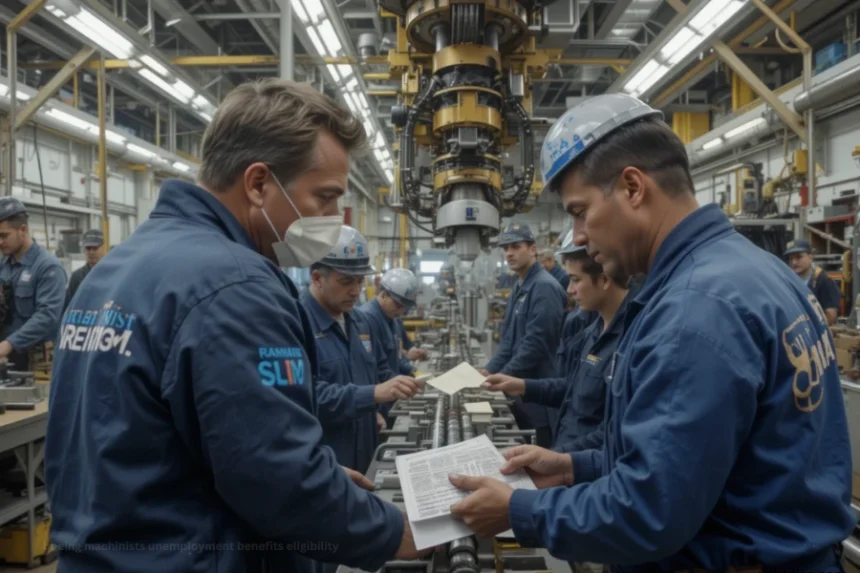For workers who are experiencing job insecurity, unemployment benefits are essential since they offer financial help during these times. For Boeing machinists, understanding their eligibility for unemployment benefits is crucial, especially given the shifts and challenges the aerospace industry often encounters. This article explores the key factors influencing Boeing machinists’ eligibility for unemployment benefits, the application process, and recent developments affecting their claims.
What Are Unemployment Benefits?
State governments offer unemployment benefits, which are short-term financial aid, to qualified employees who have lost their jobs due to circumstances beyond their control.These benefits aim to support individuals while they search for new employment, sustain consumer spending, and stabilize the economy.
Who Are Boeing Machinists?
Boeing machinists are highly qualified professionals in charge of producing, putting together, and repairing aircraft parts. Often represented by unions such as the International Association of Machinists and Aerospace Workers (IAM), these employees work in complex, high-precision roles critical to Boeing’s production line.
Key Factors Affecting Boeing Machinists’ Unemployment Benefits Eligibility
1. Reason for Job Loss
One of the primary considerations in unemployment claims is the reason behind the job loss. If Boeing machinists are laid off due to layoffs, restructuring, or economic downturns, they generally qualify for unemployment benefits. However, if they voluntarily resign or are terminated for misconduct, they might be disqualified.
2. Work History and Earnings
Eligibility frequently depends on previous wages and work experience. Applicants must have earned a minimum amount during their base period, which usually spans the last 12 to 18 months, according to the majority of states.For Boeing machinists, their tenure, hours worked, and wages impact their qualification.
3. Availability for Work
To receive benefits, workers must be physically able and actively seeking employment. Machinists should demonstrate their job search efforts, such as applying for positions and attending interviews.
4. Adherence to State Requirements
Every state has its own set of regulations and processes for administering its unemployment insurance program. Machinists must file claims in the state where they were employed, and they need to meet that state’s criteria, which may include participation in re-employment programs.
Special Considerations for Boeing Machinists During Industry Fluctuations
The aerospace industry is susceptible to economic cycles, technological shifts, and geopolitical factors. During downturns, Boeing may temporarily lay off staff, including machinists, which triggers unemployment benefits eligibility. Notably:
- Temporary versus Permanent Layoffs: Temporary layoffs often qualify machinists for benefits, provided they meet other criteria.
- Plant Closures: Major closures could lead to extended unemployment periods, potentially qualifying machinists for additional assistance like extended benefits or pandemic-related relief programs.
- Union Contracts and Negotiations: Union agreements may include provisions related to layoffs and benefits, influencing eligibility and the process for claiming benefits.
The Application Process for Boeing Machinists
Applying for unemployment benefits involves several steps:
- Gather Necessary Documentation: This includes employment history, Social Security number, bank details (for direct deposit), and reason for job separation.
- File a Claim: Workers need to submit their claim online or via phone through their state’s unemployment office.
- Certify Weekly Eligibility: Machinists must regularly certify their unemployment status, showing they are actively seeking employment.
- Respond to Requests for Additional Information: Occasionally, requests for further documentation or interviews are necessary to process claims.
Recent Developments Impacting Boeing Machinists’ Benefits
Recent events such as industry downturns, supply chain disruptions, and corporate restructuring may influence unemployment benefits eligibility for Boeing machinists. For instance:
- COVID-19 Pandemic Effects: The pandemic led to significant layoffs across the aerospace sector, with many machinists qualifying for unemployment assistance.
- Legislative Changes: Stimulus packages and federal aid introduced extended or enhanced benefits, affecting eligible workers.
- Technological Automation: Advancements in manufacturing may reduce employment opportunities, impacting job stability and claims.
Challenges Faced by Boeing Machinists in Claiming Benefits
Despite eligibility, machinists may encounter obstacles such as delayed payments, bureaucratic hurdles, or misunderstandings about qualification criteria. Union representatives and employment attorneys can assist in navigating these challenges effectively.
Conclusion
Boeing machinists’ unemployment benefits eligibility depends on several factors, including the reason for job loss, work history, and adherence to state-specific requirements. Understanding these criteria is essential for ensuring that laid-off workers access the support they need during transitional periods. As the aerospace industry continues to evolve, staying informed about changes in unemployment policies and leveraging union support can significantly influence an individual’s ability to secure benefits and re-enter the workforce successfully.
If you’re a Boeing machinist facing unemployment, it’s advisable to contact your local unemployment office or union representative promptly to clarify your eligibility and streamline the application process. Staying proactive ensures that you maximize your benefits and receive the support necessary during these challenging times.



